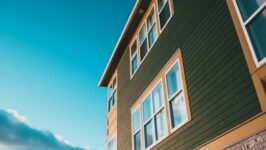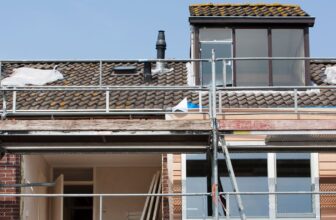
Average Cost of New Siding Installation Explained
Updating your home’s exterior with new siding is an investment that pays dividends in both appearance and functionality. However, one of the primary considerations for homeowners is the cost involved.
Cost of New Siding Installation
Before plunging into the details, it’s crucial to understand what siding installation involves. For a deeper look into this subject, explore new siding installation costs.
Material Costs
Arguably, the most significant factor affecting your siding installation cost is the material you choose. Different materials offer various aesthetics and functionalities and come at different price points.
Vinyl Siding: Vinyl siding is one of the most popular choices for homes due to its affordability and low maintenance. The average cost ranges from $2 to $7 per square foot. So, for a home that needs 2,000 sq. ft. of siding, you could be looking at a cost of $4,000 to $14,000 just for the material.
Wood Siding: Wood siding provides a classic and timeless look but tends to be more expensive, costing between $5 and $12 per square foot. For a 2,000 sq. ft. home, this means material costs would range from $10,000 to $24,000.

Fiber Cement Siding: Fiber cement siding offers a good compromise between durability and aesthetic appeal. This material generally costs between $6 and $13 per square foot. For a 2,000 sq. ft. home, the material cost would be between $12,000 and $26,000.
Metal Siding: Metal siding is gaining popularity for its modern look and durability. Expect to pay between $3 and $10 per square foot, resulting in a material cost of $6,000 to $20,000 for a 2,000 sq. ft. house.
Labor Costs
Labor constitutes the second most significant chunk of your total siding installation expense. Labor costs depend largely on the intricacy of the project and typically fall between $1 and $5 per square foot.
For a 2,000 sq. ft. home, this translates to a labor cost ranging from $2,000 to $10,000.
Complex installations may require specialized skill sets, pushing labor costs higher. Features like multiple corners, varying wall heights, or intricate patterns will add to the labor cost.
Additional Costs
When budgeting for siding installation, several additional costs often get overlooked.
Removal of Old Siding: Before new siding can be installed, the old siding must typically be removed. Depending on the material and labor involved, this can cost between $1,000 and $3,000. The process may also require permits or inspections, which can add to the overall price.
If the old siding contains hazardous materials like asbestos, specialized removal may be needed, increasing costs.

Trim and Fascia: Installing trim and fascia can cost an extra $6 to $10 per linear foot, affecting your total cost. The type of trim and fascia you choose can impact this price; more elaborate or higher-end materials will be more expensive. Furthermore, trim and fascia add aesthetic appeal and serve as essential components for water runoff, making them a crucial part of your siding project.
Weatherproofing: Weatherproofing measures like house wrap or vapor barriers usually add around $1 per square foot to the total cost. It’s an important step to ensure that your new siding will offer optimal energy efficiency and protect your home from water damage. These weatherproofing measures can also extend the lifespan of your siding, providing long-term benefits that can offset the initial cost.
Geographical Variation
Your geographical location can considerably impact the cost of labor and materials. Labor is generally more expensive in metropolitan areas compared to smaller towns.
Certain areas may also have higher costs for materials due to transportation fees, demand, or local regulations.



















































































